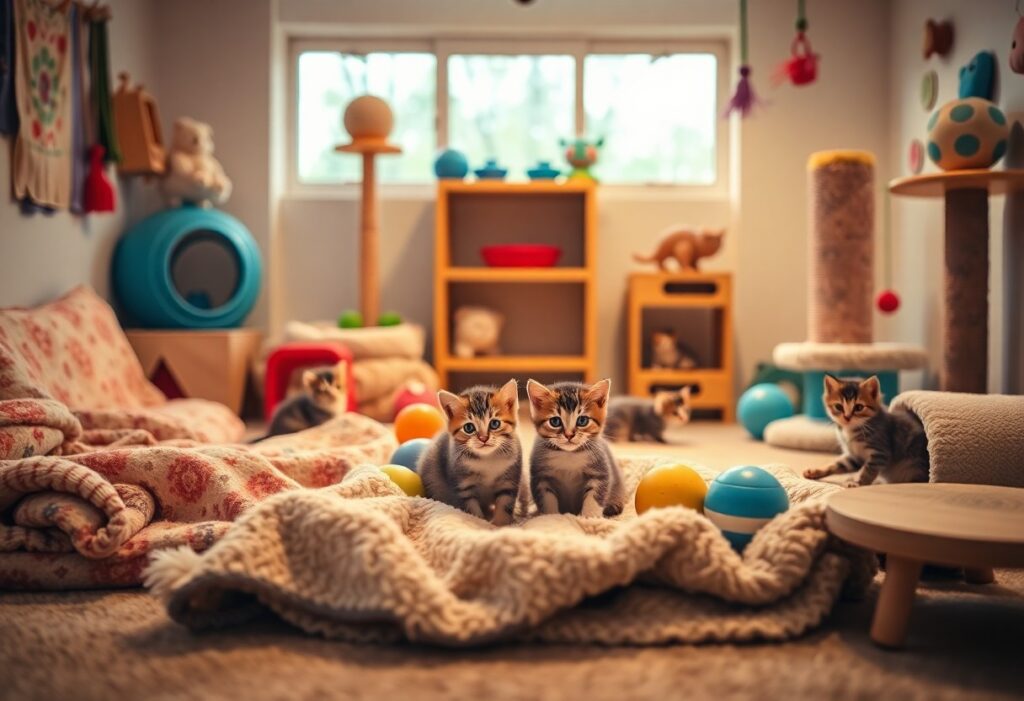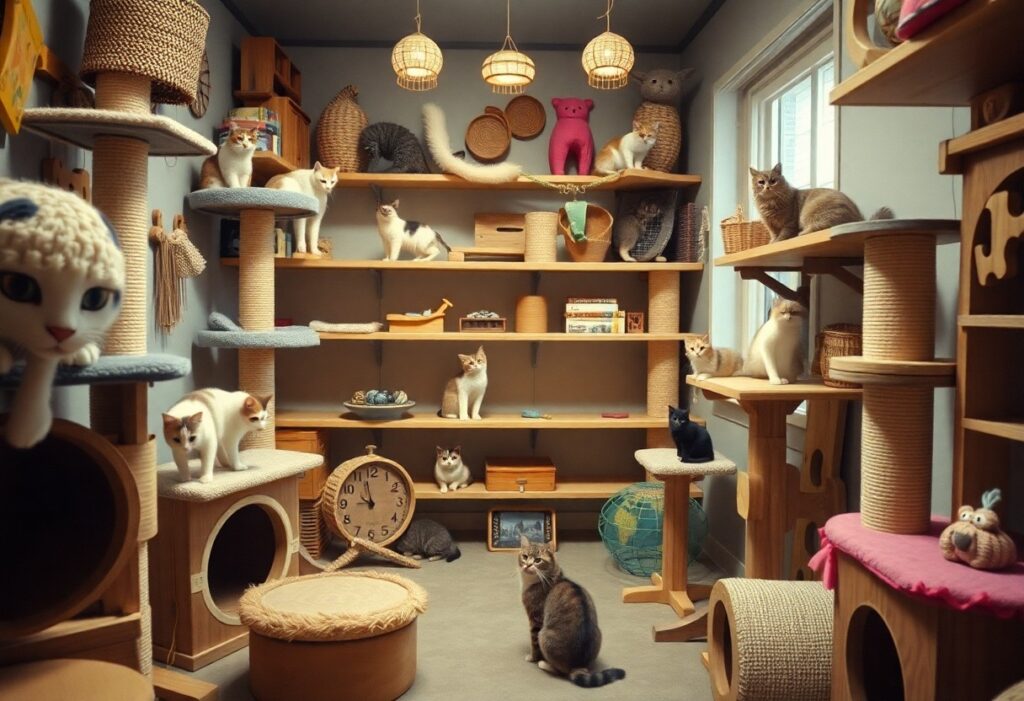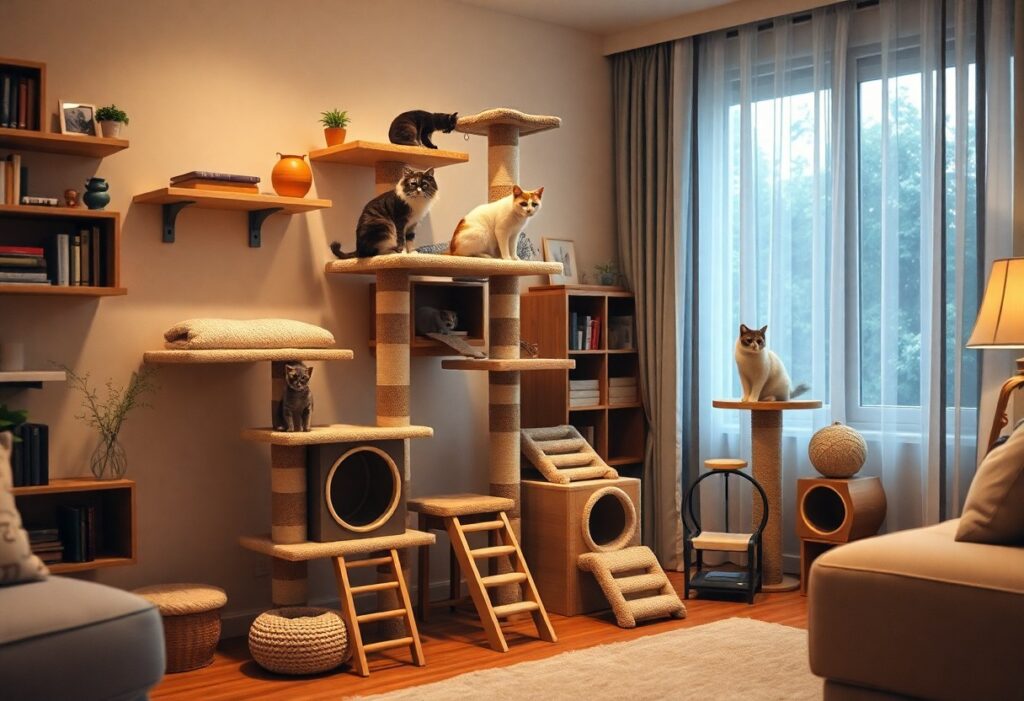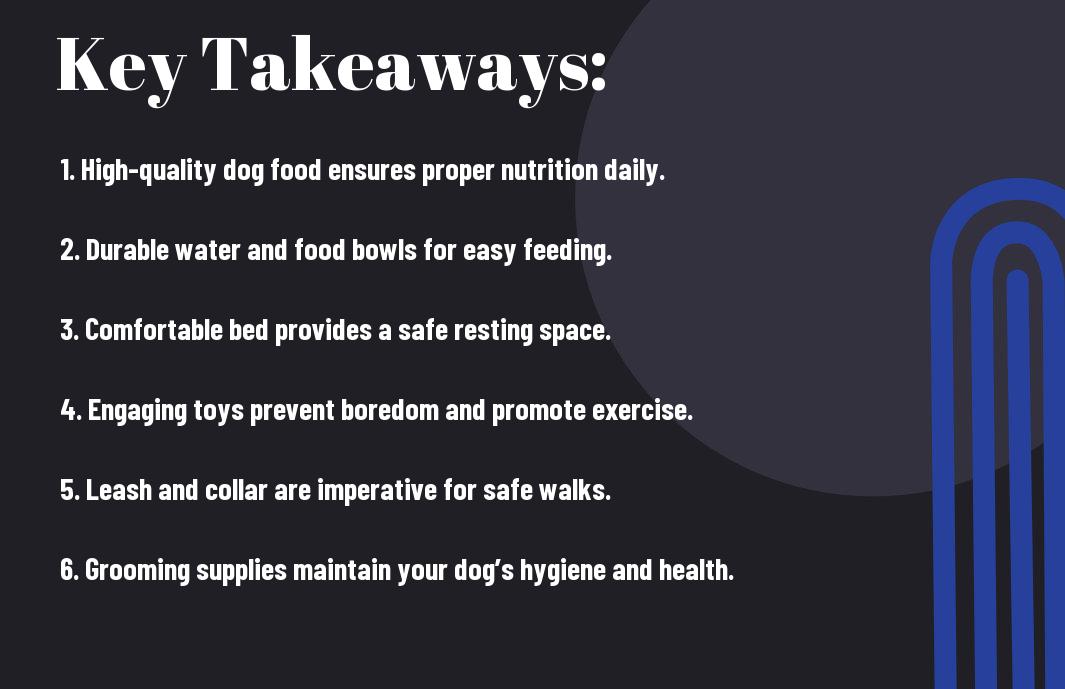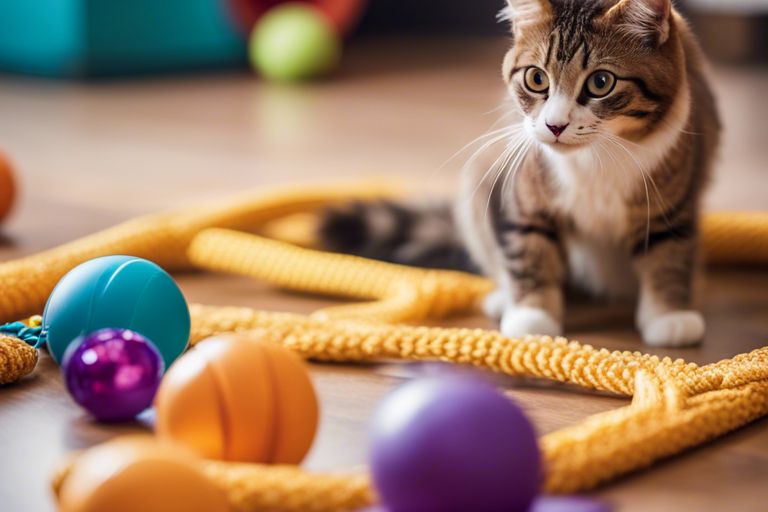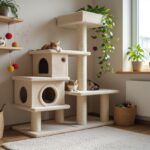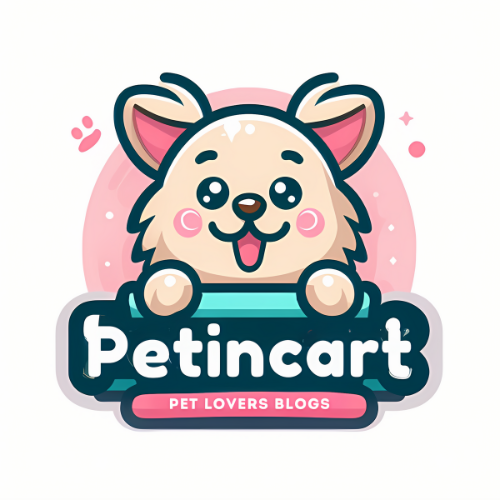You might be wondering how to create a vibrant and safe indoor environment for your growing kittens. Most kittens are naturally playful and curious, so it’s imperative to design areas that encourage their exploratory nature while also keeping them protected from common household hazards. By implementing the right materials and engaging elements, you can ensure both safety and entertainment for your furry friends as they explore their new space. Let’s probe how you can transform your home into the perfect playground for your playful companions.

Key Takeaways:
- Provide a variety of toys and climbing structures to promote physical activity and mental stimulation for kittens.
- Ensure the play area is free from hazards, such as small objects, toxic plants, and accessible cords or wires.
- Incorporate cozy hiding spots and resting areas to allow kittens to feel secure and have quiet moments between playtime.
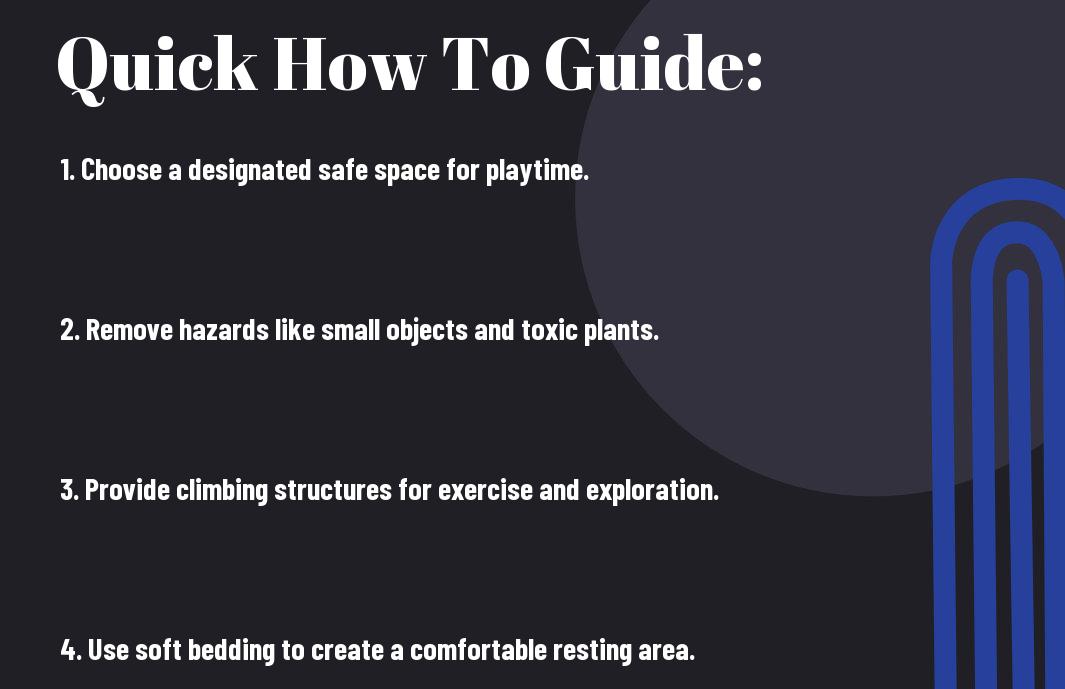
Understanding the Importance of Indoor Play for Kittens
Before bringing home a playful kitten, it’s vital to recognize the significance of indoor play. Kittens require stimulation to develop their physical and mental abilities, and creating a safe indoor environment enables them to explore, learn, and socialize while minimizing the risks associated with outdoor hazards. By prioritizing indoor play, you provide your kitten with a secure space to thrive and grow into a well-adjusted adult cat.
Benefits of Indoor Play
Play is vital for your kitten’s development and well-being. Engaging in indoor play helps enhance their coordination, build strength, and reduce destructive behavior caused by boredom. It also fosters socialization skills, allowing your kitten to build trust and learn appropriate interactions with you and other pets. Overall, indoor play creates a stimulating environment that promotes a healthy and happy lifestyle for your furry friend.
Factors to Consider When Creating Play Areas
Play areas should be designed with specific factors in mind to ensure your kitten’s safety and happiness. Consider the following elements when setting up their play space:
- Safety – Remove hazardous items that your kitten might swallow or get injured by.
- Space – Provide enough room for your kitten to move freely and explore.
- Variety – Include different toys and structures to keep your kitten engaged.
- Supervision – Regularly check on your kitten while they play to prevent any accidents.
This helps create a balanced environment that supports their natural instincts.
Areas that promote optimal play experiences should incorporate diverse elements to foster your kitten’s exploration and development. Balance soft surfaces with sturdy climbing structures for confidence building. Offer toys that challenge their instincts, such as feather wands and interactive puzzles. Ensure the area is free from small objects or anything that could cause choking hazards. An adequately arranged play area nurtures both their physical and mental health, setting the stage for a fulfilled life with endless adventures. This can make all the difference in how your kitten grows and conducts itself in the household.
Key Elements of Safe Indoor Play Areas
Any indoor play space for your kittens should prioritize safety and engagement. You will want to create areas that encourage physical activity, exploration, and mental stimulation while ensuring your kitten’s well-being. Consider designated zones for climbing, scratching, and interactive play that allow them to thrive in a secure environment.
Choosing Safe Materials and Toys
Indoor play areas should incorporate toys and materials that are safe for your kittens. Opt for items made from natural and non-toxic substances, ensuring they won’t pose any health risks. Avoid small parts or components that could result in choking hazards, and prioritize durable toys designed specifically for kitten use. This way, your playful furballs remain entertained without compromising their safety.
Ensuring the Environment is Kitten-Proof
Now that you’ve chosen the right materials, it’s necessary to create a kitten-proof environment. Make sure to secure loose cables, hide any toxic plants, and remove small objects that could pose a choking risk. Additionally, keep your windows and balconies secure to prevent unexpected escapes. Use furniture to create barriers and create safe hiding spots for your kittens.
Toys and household items can pose unexpected dangers to your kittens. Regularly check that your kitten’s environment is clear of small objects and sharp edges. Secure cables and wires out of reach to avoid chewing risks. Use baby gates or furniture to block off staircases and other hazardous areas. By taking simple precautions, you can create a playful yet safe space for your little adventurers to explore.
Engaging Play Area Ideas
After creating a safe space for your kittens, you’ll want to fill it with engaging play area ideas that stimulate their natural instincts. Consider incorporating various elements like scratching posts, climbing trees, and tunnels to keep their curiosity piqued. A mix of textures and heights will cater to their playful nature and encourage healthy physical activity.
DIY Play Structures
You can create your own play structures using cardboard boxes, wooden pallets, or sturdy furniture. Stack and secure boxes of different sizes to create mazes and hiding spots that appeal to your kittens’ adventurous spirits. Adding ramps or platforms can enhance their climbing experience, making their play area entertaining and safe.
Interactive Play Zones
You should design interactive play zones that promote bonding through fun activities. Use toys that encourage engagement, such as feather wands or laser pointers, while also ensuring your kittens can explore and play independently. These interactive experiences will not only entertain them but also help develop important skills.
Play zones should be equipped with a variety of toys to stimulate your kittens’ minds and bodies. Incorporate puzzle feeders to challenge their problem-solving abilities, while also reinforcing healthy eating habits. Avoid small items that can pose choking hazards and ensure all materials are safe, non-toxic, and suitable for your kittens’ age. Lastly, rotating toys periodically keeps the environment fresh and engaging, preventing boredom and encouraging exploration.
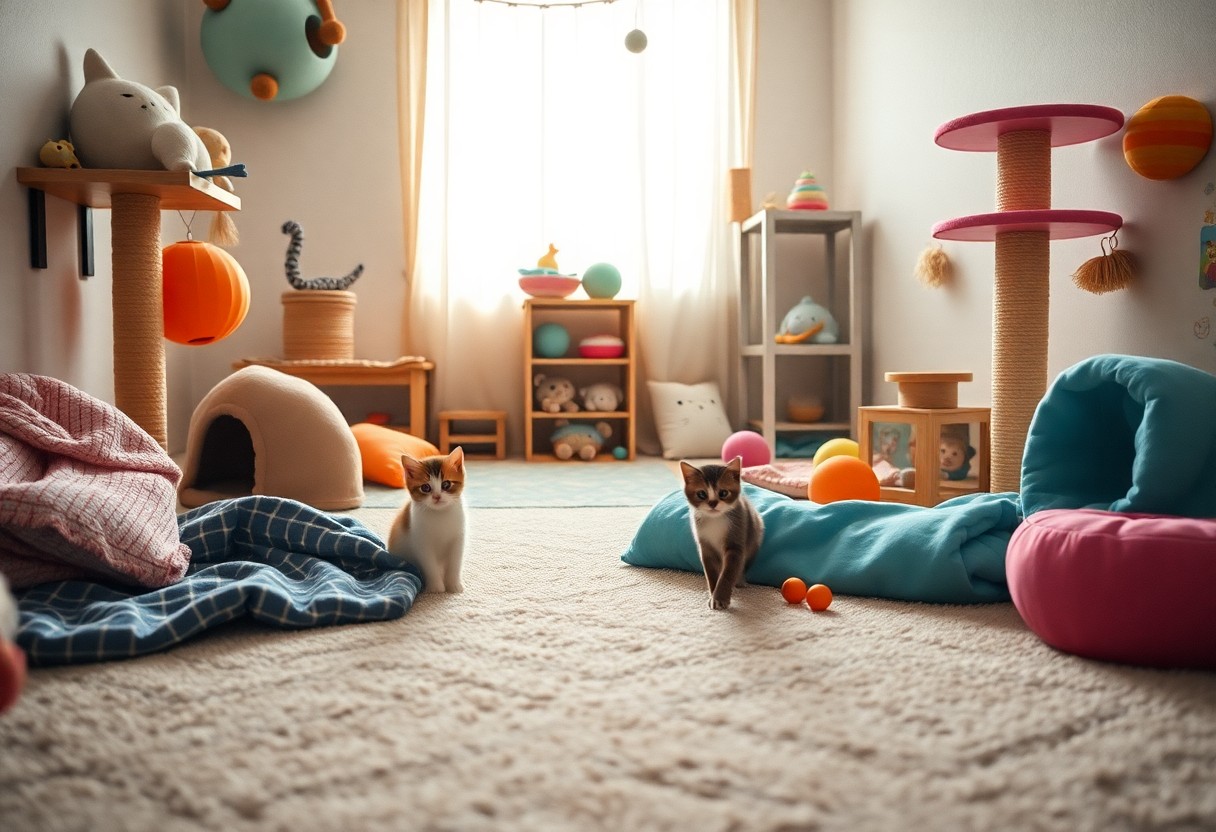
How to Incorporate Training into Playtime
Not only is playtime necessary for your kitten’s development, but it also serves as an excellent avenue for training. By integrating training into your play sessions, you can teach your kitten valuable skills and good behavior while keeping the experience enjoyable. Start with simple commands, using toys as rewards to encourage learning during these fun interactions.
Positive Reinforcement Techniques
Incorporate positive reinforcement techniques to make training effective and enjoyable. Using treats or your kitten’s favorite toy as a reward, you can motivate them to follow commands or perform desired behaviors. This approach helps your kitten associate learning with positive experiences, enhancing their willingness to participate in training sessions.
Socialization Through Play
There’s no better way to socialize your kitten than through play. Engaging in regular playtime with different toys and interactive sessions introduces them to new experiences, sounds, and movements. This exposure builds their confidence and helps them feel more comfortable in various situations.
The process of socialization is vital for your kitten’s development. The more they play with you and experience different environments, the more adaptable they become. Introduce various toys and interactive activities, allowing your kitten to encounter new stimuli. This will help reduce fearfulness or aggression toward unfamiliar situations, ultimately fostering a more well-rounded and friendly cat. Aim for gradual exposure, consistent interactions, and positivity to ensure your kitten thrives in their social engagements.
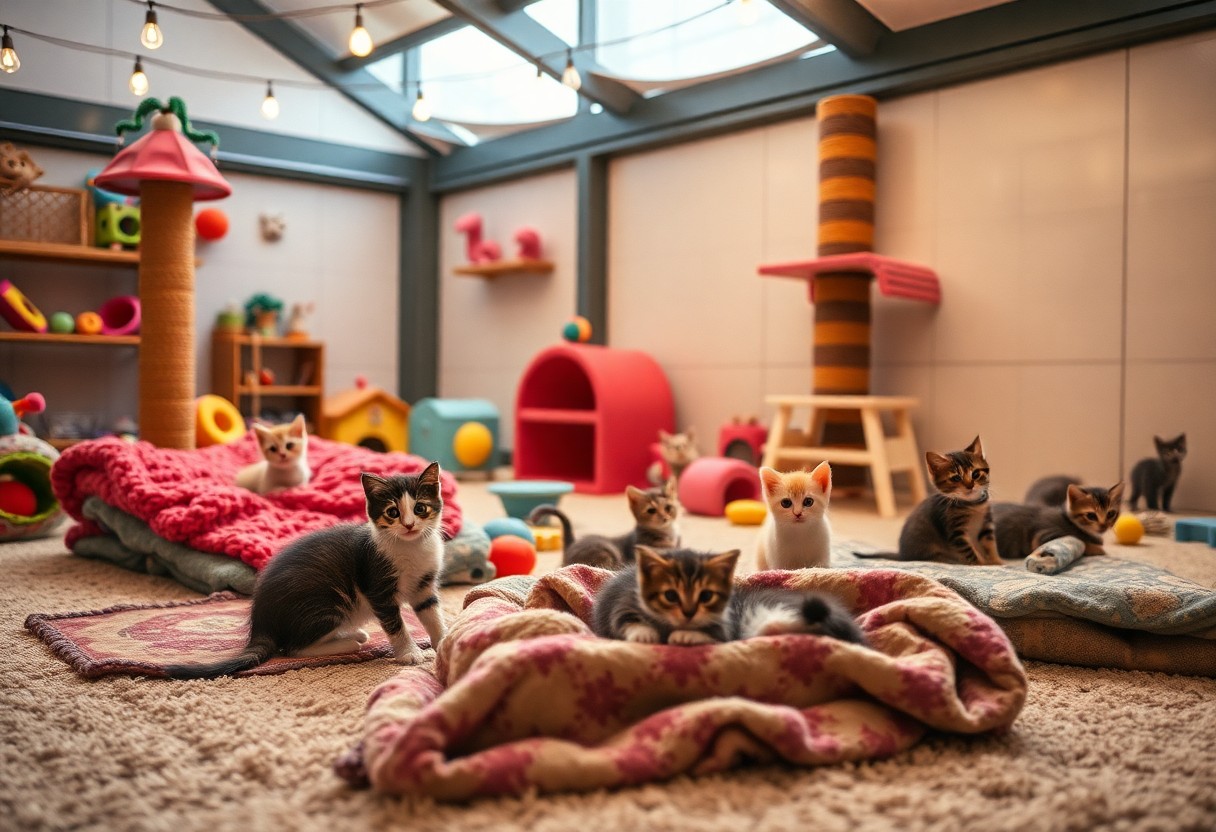
Maintaining a Clean and Safe Play Space
Keep your kittens’ play area tidy and secure by implementing effective cleaning routines. Not only does a clean space prevent illnesses, but it also keeps your curious cats engaged. Make sure to regularly check toys and surfaces for any signs of wear and tear, as they can pose a risk to their playful antics. Safe spaces lead to healthier and happier kittens!
Regular Cleaning and Disinfection Tips
If you want to ensure a healthy environment for your kittens, follow these cleaning and disinfection steps:
- Clean litter boxes daily to eliminate odors and bacteria.
- Wipe down toys with pet-safe disinfectants weekly.
- Vacuum carpets and rugs regularly to remove hair and dander.
- Deep clean surfaces every month to maintain hygiene.
Thou will create a perimeter for cleanliness and safety, benefiting both you and your playful companions.
Monitoring for Hazards
Little kittens are naturally curious, so it’s vital to keep an eye out for potential hazards in their indoor play area.
With your vigilance, you can reduce risks by eliminating sharp objects, securing power cords, and avoiding houseplants that are toxic to cats. Ensuring that toys are made from non-toxic materials and checking for any small, detachable parts are important steps in safeguarding your kittens. Always keep chemicals, medications, and household cleaners out of reach, and regularly assess areas for nesting spots that could harbor unwanted pests or materials. Your dedication to monitoring will lead to a safer environment for your furry friends.
Final Words
Considering all points, creating safe and engaging indoor play areas for your growing kittens involves a thoughtful approach to their needs and behaviors. By incorporating a variety of stimulating toys, secure climbing structures, and cozy resting spots, you can encourage their natural instincts while ensuring their safety. Additionally, regularly rotating toys and providing interactive playtime will enhance their environment and keep them active. Prioritizing their well-being and curiosity in your indoor space will help foster happy, healthy kittens that thrive in their home.
FAQ
Q: Why is it important to create a safe indoor play area for kittens?
A: A safe indoor play area is necessary for kittens as it helps protect them from potential dangers in the home, such as electrical cords, toxic plants, and small objects that could be swallowed. Additionally, a dedicated play space encourages physical activity and mental stimulation, fostering overall health and development.
Q: What items should I include in my kitten’s play area?
A: Your kitten’s play area should be equipped with various engaging toys like balls, feather wands, and scratching posts. Soft bedding or blankets can provide comfort, while climbing structures offer vertical play opportunities. Interactive toys that promote problem-solving skills are also beneficial for their mental development.
Q: How can I ensure the play area is stimulating for my kitten?
A: To create a stimulating environment, incorporate a mix of toys that encourage different types of play, such as chasing, hunting, and climbing. Rotate toys regularly to maintain interest and introduce new challenges. Cat trees, tunnels, and hiding spots can also create a dynamic space where your kitten can explore and satisfy their curiosity.
Q: Are there specific safety precautions I should take when setting up the play area?
A: Yes, there are several safety precautions to consider. Secure or remove any dangerous items such as cords, sharp objects, or breakables from the area. Check that all toys are made from non-toxic materials and are appropriate for kittens. Also, assess the play area to ensure there are no small spaces where a kitten could become trapped.
Q: How much space do I need for a kitten’s play area?
A: The size of the play area can vary depending on the space available in your home. Ideally, it should be large enough for the kitten to move freely, explore, and engage with their toys. A room or a designated corner with adequate space for climbing and playing is ideal. Even a small area can be stimulating if it is well-organized and filled with varied activities.
